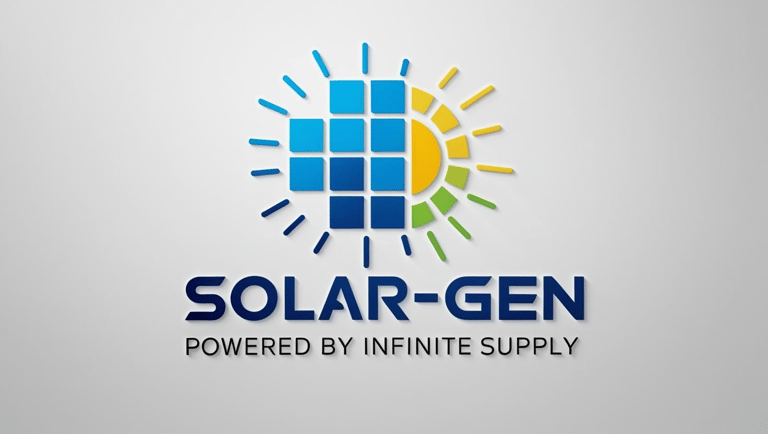Guide to Making Your Initial Solar Panel Purchase
Here's what all the requirement you will need for your DIY project
5/8/20243 min read
Navigating Your First Solar Panel Purchase: What You Need to Know
So you've done your research and decided that solar panels are right for your home. Congratulations! Now comes one of the most critical phases: making that initial purchase. The choices you make now will impact your system's performance, longevity, and financial returns for decades to come. This guide will walk you through the key considerations for this significant investment.
Choosing the Right Equipment
Solar Panels
Panel Types:
Monocrystalline: These black panels with rounded edges are the most efficient (18-22%) and longest-lasting, but come at a premium price.
Polycrystalline: Recognizable by their bluish hue and square cells, these offer moderate efficiency (15-17%) at a more affordable price point.
Thin-film: Less common for residential use, these flexible panels are less efficient but can be useful for unusual installations.
Key Specifications:
Wattage: Most residential panels range from 300-400 watts. Higher wattage means fewer panels needed but potentially higher per-panel cost.
Efficiency: Higher efficiency panels generate more electricity in limited space.
Temperature coefficient: Lower coefficients mean better performance in hot conditions.
Degradation rate: Quality panels should lose no more than 0.5-0.7% efficiency per year.
Inverters
Types:
String inverters: The most economical option, these convert power for multiple panels but can be affected if one panel underperforms.
Microinverters: Installed on each panel, these maximize production and offer better monitoring but cost more upfront.
Power optimizers: A hybrid approach that improves performance while using a string inverter.
Considerations:
Warranty length (typically 10-25 years)
Monitoring capabilities
Compatibility with future battery storage
Battery Storage (Optional)
While not necessary for grid-tied systems, batteries provide backup power during outages and maximize self-consumption of solar energy.
Popular options:
Lithium-ion batteries (like Tesla Powerwall, LG Chem)
Lead-acid batteries (less expensive but shorter lifespan)
Flow batteries (emerging technology with longer cycles)
Key metrics:
Capacity (kWh)
Power rating (kW)
Depth of discharge
Cycle life
Warranty terms
Finding the Right Installer
Your installer is as important as the equipment you choose. Look for:
Credentials:
NABCEP (North American Board of Certified Energy Practitioners) certification
State and local licensing
Manufacturer certifications for the equipment they install
Experience:
Years in business
Number of installations completed
Experience with your specific roof type or installation scenario
Reviews and reputation:
Online reviews across multiple platforms
References from previous customers
Standing with Better Business Bureau
Post-installation support:
Monitoring setup and support
Maintenance services
Warranty claims assistance
Understanding Your Quote
A comprehensive solar quote should include:
System details:
Total system size (kW)
Number and type of panels
Inverter specifications
Mounting system details
Production estimates (kWh annually)
Financial breakdown:
Equipment costs
Labor costs
Permit fees
Grid interconnection fees
Monitoring setup
Any necessary electrical upgrades
Incentives and rebates:
Federal Investment Tax Credit calculation
State tax incentives
Utility rebates
Solar Renewable Energy Credits (SRECs) information
Warranty information:
Product warranties (typically 10-25 years)
Workmanship warranty (varies widely)
Production guarantees, if offered
Contract Considerations
Before signing, ensure your contract clearly outlines:
Timeline:
Site assessment date
Permitting period
Installation dates
Grid connection timeline
Payment schedule:
Deposit amount
Milestone payments
Final payment conditions
System specifications:
Exact equipment to be installed
Performance guarantees
Monitoring system details
Responsibilities:
Permitting processes
Utility interconnection
Incentive application assistance
Financing Your Purchase
Cash purchase:
Highest upfront cost but greatest long-term savings
Full ownership of incentives
Simplest arrangement
Solar loan:
Similar benefits to cash purchase
Many solar-specific loans available with competitive rates
May be secured or unsecured
Home equity options:
HELOC or home equity loan
Potentially tax-deductible interest
Often lower interest rates
Power Purchase Agreement (PPA):
No or low upfront cost
Pay for power produced, typically at a rate lower than utility
Provider owns and maintains the system
Solar lease:
Fixed monthly payments regardless of production
Similar to PPA with minimal upfront investment
Less financial benefit over time compared to ownership
Pre-Installation Preparations
Once you've made your purchase, prepare for installation by:
Administrative steps:
HOA approvals (if applicable)
Building permits
Utility interconnection applications
Home preparations:
Roof repairs or replacements if needed
Tree trimming for optimal sun exposure
Clear access to work areas
Electrical panel upgrades if required
Post-installation planning:
Understanding monitoring system setup
Learning shutdown procedures
Scheduling final inspections
Final Thoughts
Taking the plunge on your first solar purchase can feel overwhelming, but with careful research and the right partners, it's a decision that pays dividends for decades. Focus on quality components, reputable installation, and clear contracts. Remember that the lowest price doesn't always represent the best value—reliability and performance should be paramount considerations for a system that's expected to power your home for 25+ years.
By approaching your purchase methodically and asking the right questions, you're setting yourself up for a smooth transition to clean, renewable energy and years of sustainable savings.
